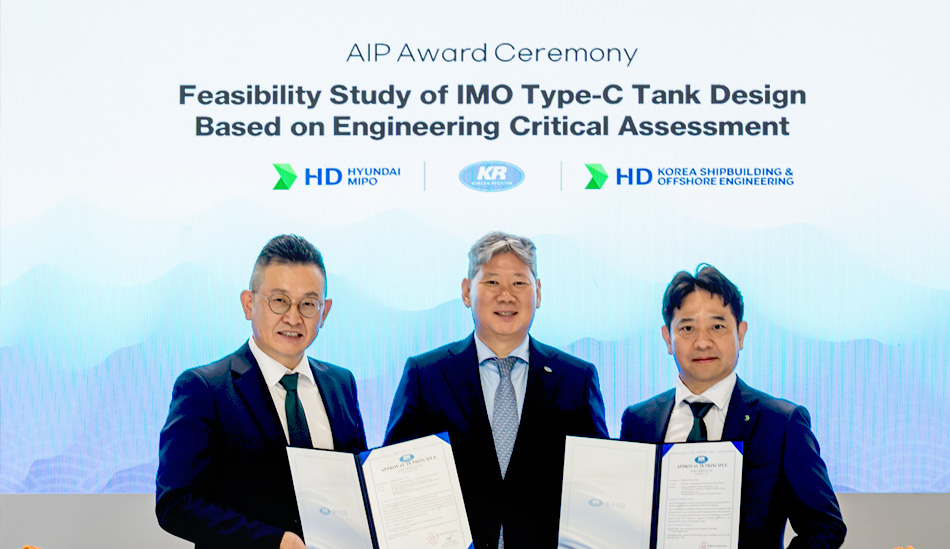Inside KR
KR Decarbonization Magazine
VOL.11 | NOVEMBER 2025
KR Grants AIP to HD Hyundai’s
LNG Boil-off Gas Treatment System
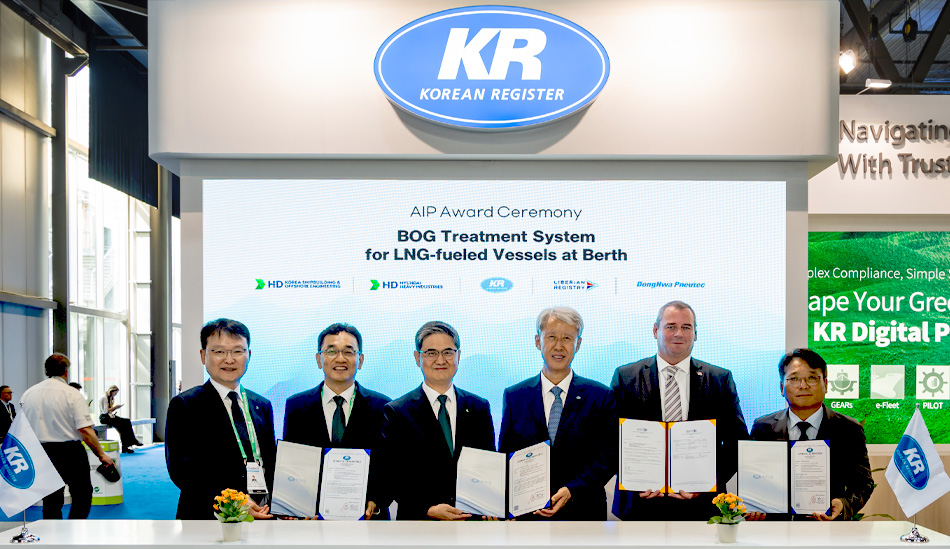
KR has granted an Approval in Principle for an LNG Boil-off Gas (BOG) Treatment System jointly developed by HD Hyundai Heavy Industries and Donghwa Pneutec at Gastech 2025. The AIP, awarded in cooperation with the Liberian Registry, is based on a concept proposed by HD Korea Shipbuilding & Offshore Engineering (HD KSOE).
The newly developed BOG treatment system is designed for installation and operation both onboard vessels and along quays during berth. It can process up to 0.5 tonne of BOG per hour, converting it into city gas for onshore energy use.
This enables shipyards to recover BOG generated during vessel construction, thereby reducing both greenhouse gas emissions and fuel losses. Shipowners, in turn, can safely manage surplus gas during extended port stays or when Alternative Maritime Power (AMP) is required, ensuring compliance with increasingly stringent environmental regulations.
The joint development project was completed through close cooperation between the shipyard, equipment manufacturer, classification society, and flag administration, building upon HD KSOE’s concept design. In June 2025, the system was applied to an 8,000 TEU LNG dual-fueled containership under construction, where it successfully completed demonstration trials, verifying its performance.
KR Approves Ammonia-Fueled Ship Safety Solution
‘Hi-CLEARS’ Developed by HD Hyundai
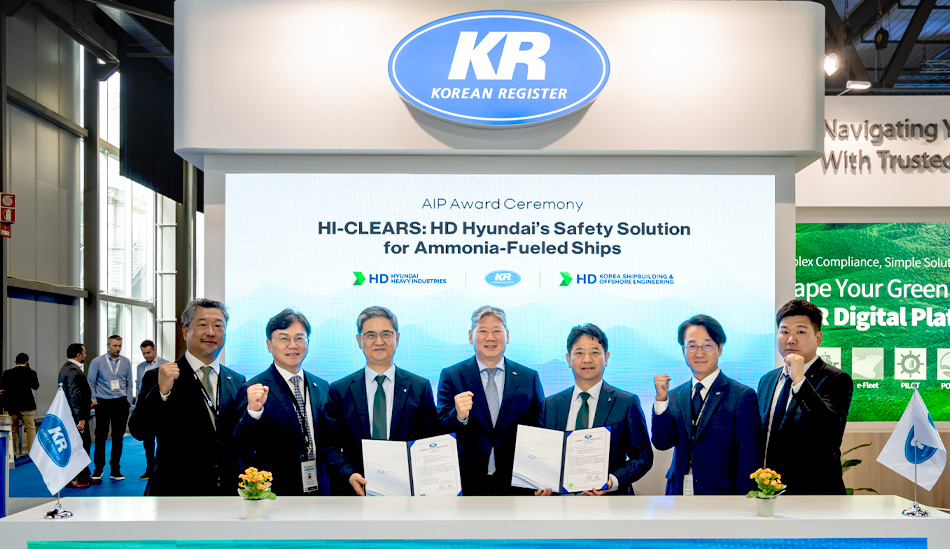
KR has granted Approval in Principle for the ammonia-fueled ship safety solution ‘Hi-CLEARS’. The system was developed in collaboration with HD Hyundai Heavy Industries and HD Korea Shipbuilding & Offshore Engineering and was announced at Gastech 2025.
The approval is the result of a joint development project aimed at overcoming safety and regulatory barriers to the commercialization of ammonia-fueled vessels and at laying the groundwork for future international technical standards. The newly developed Hi-CLEARS is a safety-enhancing system that swiftly captures any ammonia gas leaked during operation, converts it into aqueous ammonia, and uses it as a reductant in an SCR (Selective Catalytic Reduction) system. This innovative solution not only eliminates potential ammonia leakage but also achieves a ‘Zero Discharge’ of ammonia to the atmosphere and sea, earning recognition as a breakthrough technology.
KR took a central role in amending IACS Unified Requirement M77, which governs the application of SCR systems on ships. The revision, based on risk assessment, now permits aqueous ammonia and ammonia itself to be used as reductants, where previously their use was restricted. This change provides the technical foundation needed for the commercialization of Hi-CLEARS and demonstrates KR’s commitment to shaping international safety requirements.
KR Approves ‘IMO Type-C Tank Design Based on Engineering Critical Assessment’ Jointly Developed by HD Hyundai Mipo and HD KSOE
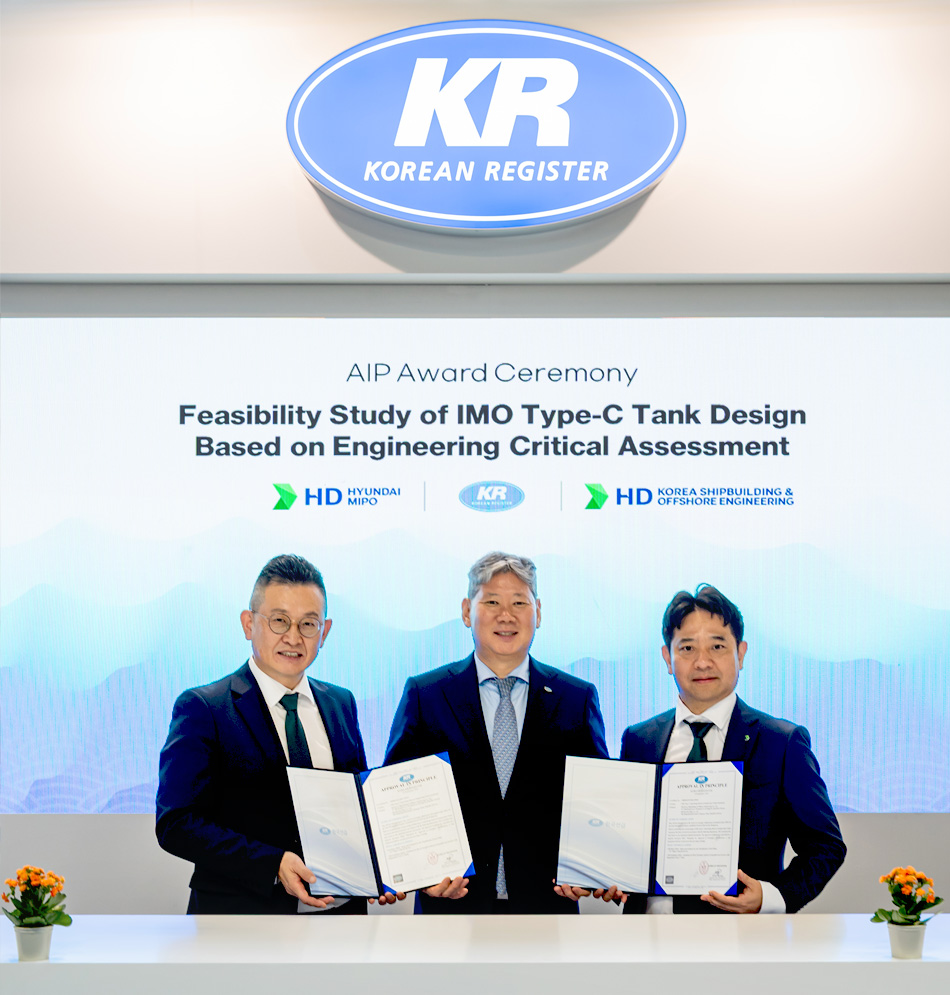
KR has awarded Approval in Principle to HD Hyundai Mipo and HD Korea Shipbuilding & Offshore Engineering for their IMO Type-C tank design applying Engineering Critical Assessment (ECA). The AIP was announced during the Gastech 2025.
This project is part of ongoing efforts to address the growing demand for eco-friendly fuels and cargoes such as LNG, ammonia, and hydrogen. These fuels are stored and transported under high-pressure and cryogenic conditions, and in particular, for small and medium-sized gas carriers and bunkering vessels, achieving both efficiency and safety in tank design has become a critical challenge.
To meet these technical challenges, the three parties have developed procedures to apply ECA-based structural integrity assessment methods from the early design stage of IMO Type-C independent tanks. This methodology enables the prediction of crack propagation in metallic structures and provides a structural safety analysis throughout the tank’s operational lifetime under real service conditions.
As part of the project, HD Hyundai Mipo evaluated the structural and fatigue strength of the tank, while HD KSOE led the tank design and structural integrity assessment. KR conducted a comprehensive review of the design in accordance with its classification rules and international regulations, which enabled the issuance of the AIP.
KR and HD Hyundai Samho Launch Joint Development of Ammonia Fuel Piping Safety System

KR signed a Memorandum of Understanding with HD Hyundai Samho at Gastech 2025. The two companies will jointly develop a water circulation system for the double-wall pipe annular space of ammonia-fueled vessels, aiming to enhance the safety of next-generation ships powered by ammonia.
Ammonia fuel pipes are designed with a double-wall structure, leaving a ring-shaped annular space between the inner and outer pipes. This joint development project seeks to circulate freshwater through this space to enhance the safety of fuel supply piping and minimize potential leakage risks to the atmosphere during operation. Under the collaboration, HD Hyundai Samho will be responsible for system design and development, while KR will verify its safety.
Once completed, HD Hyundai Samho plans to apply the system to its ammonia-fueled ship designs and advance its commercialization. KR, for its part, intends to propose the need for relevant safety standards to the International Maritime Organization and continue its role as a proactive contributor to international rulemaking on alternative fuels.
KR Grants Approval in Principle (AIP) for
SHI’s “SnapWindFloat”, a 15MW Floating
Offshore Wind Substructure
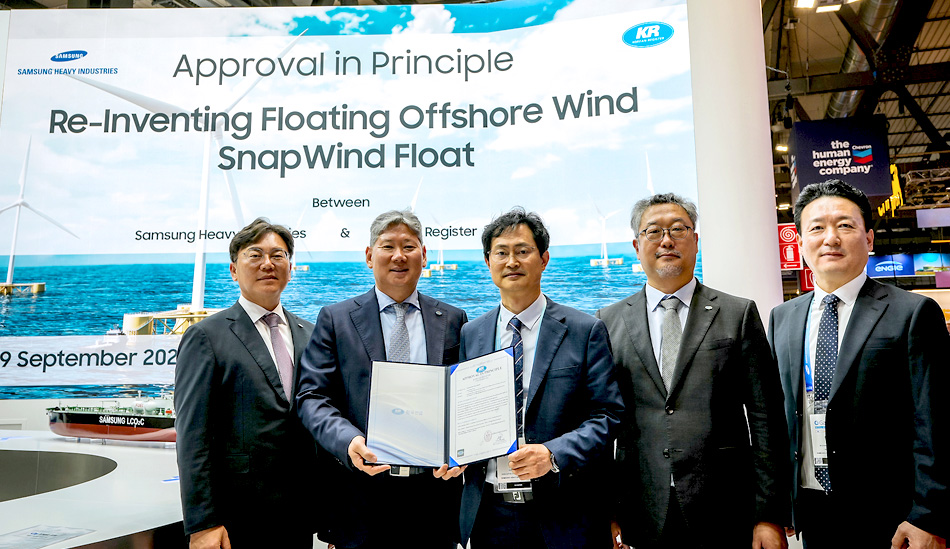
KR has awarded an Approval in Principle (AIP) for Samsung Heavy Industries’ newly developed “SnapWind Float”, a next generation floating offshore wind substructure capable of supporting 15MW turbines.
Leveraging its extensive offshore project experience, SHI has designed the “SnapWindFloat,” a floating substructure capable of supporting up to 15MW offshore wind turbines. The design incorporates lightweight and modular features for easier construction and installation. It is stabilized by a minimum of three mooring lines fixed to the seabed, ensuring safety, and is designed to maintain sufficient stability even under slightly inclined conditions. The structure is also compatible with various turbine capacities, enabling a high degree of versatility.
KR conducted a comprehensive review of the “SnapWind Float”, evaluating its safety, structural strength, and mooring system in accordance with international standards and classification rules.
KR Grants Approval in Principle for Hanwha Engine’s
Ammonia Fuel Supply System
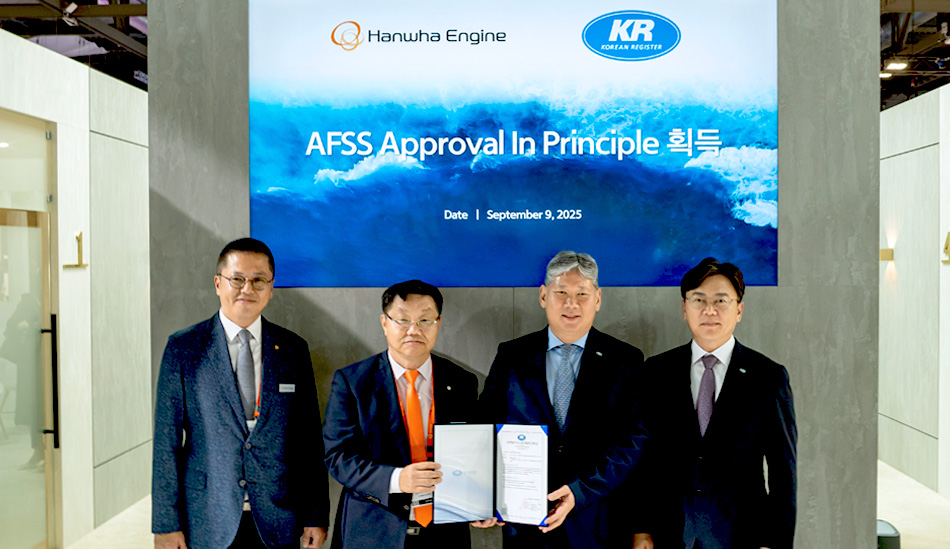
KR grants Approval in Principle (AiP) for the 93K VLAC Ammonia Fuel Supply System (AFSS) developed by Hanwha Engine.
The AFSS is a core system that ensures the stable supply of ammonia fuel to the engines of ammonia-fueled vessels at the required temperature, pressure, and flow rate. It is an essential system for the operation of ammonia-powered ships.
Hanwha Engine’s AFSS, which has received AiP, enhances operational efficiency through optimized component layout and applies purging technology to minimize residual ammonia within the system. This significantly reduces the risk of harmful substance exposure for workers during maintenance.
KR granted the AiP after a comprehensive review of the system’s design in accordance with class rules and international regulations.
